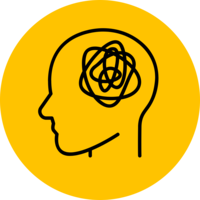Copenhagen Child Cohort Study (CCC2000)
CCC2000 comprises all children born in 2000 by women residing in one of 16 municipalities in the former Copenhagen County, Denmark. The cohort covers nearly 10% of all children born in Denmark in that year, while the catchment area consists of urban and semirural suburbs surrounding Copenhagen, with a mixture of high-, moderate-, and low-income households. All eligible cohort children and their parents were contacted and asked to participate in questionnaires, interviews, and assessments at key ages of development: 0-10 months and 1.5, 5-7, 11-12, and 16-17 years. In parallel, data from the Danish national registries have been drawn regularly.
Study design
Cohort - birth
Number of participants at first data collection
6,090 (participants)
Age at first data collection
Birth (participants)
Participant year of birth
2000 (participants)
Participant sex
All
Representative sample at baseline?
The Danish child population in terms of perinatal and sociodemographic characteristics at baseline, except for a higher proportion of immigrant families (16% versus the national average 8%) and a slightly higher household income (corresponding to the metropolitan area).
Sample features
Country
Year of first data collection
2000
Primary Institutions
Community Health Nurse Services
Copenhagen University Hospital (Rigshospitalet)
Research Centre for Prevention and Health (Forskningscenter for Forebyggelse og Sundhed)
Profile paper DOI
Funders
Augustinus Foundation (Augustinus Fonden)
Bagenkop-Nielsen Myopia Fund
Copenhagen County Research Foundation
County of Aarhus
Dagmar Marshalls Fond
Ongoing?
Yes
Data types collected


- Interview – face-to-face
- Physical or biological assessment (e.g. blood, saliva, gait, grip strength, anthropometry)
- Secondary data
- Self-report questionnaire – online
- Self-completed questionnaire – paper or computer assisted
- None
- None
- Census data
- Education data
- Employer data
- Healthcare data
- Medical birth registry
- Other government data
- Tax, income & benefit data
Engagement
Keywords



